Top social media listening metrics every CMO should care about
.png)
Marketing metrics are an essential part of the strategy and business overall. Since there are so many of them, it might sometimes be challenging to decide which ones are actionable and which are completely useless. We've made a guide on the most important metrics to consider as a chief marketing officer.
We're sure you've seen situations when marketing and sales teams struggle to find alignment regarding the importance of business metrics. Each team has a different opinion on what to track and how to collaborate efficiently. You may wonder how marketing metrics relate to this issue. Well, there is a direct connection because by tracking vanity metrics, your team may miss out on data that is critical to achieving the end goal.
For example, some specialists focus on getting as many followers as possible when working with social media. Others try to initiate activities like comments and likes. Both might be right depending on their goals, but the truth is that not all metrics are equally effective.
The question is how to better collect the data and turn it into metrics.
While in-app analytics like Facebook or Instagram Insights cannot provide a holistic overview of your brand, social media intelligence platforms combine data from all possible social networks. Aside from that, such solutions enable far more data to be tracked and organized to provide meaningful insights.
Below, we've picked the top most actionable metrics that can be applied to any business.
Net Sentiment Rate
It's not a secret that social media monitoring tools help companies to collect almost all the brand mentions, whether they contain the brand tag or not. In a nutshell, brands get the feed of the posts where people refer to their experiences connected with these brands.
Apart from that, social listening tools provide analytics, and sentiment detection is one of the most basic features. Based on the context, the technology tags mentions as positive, negative, or neutral. Marketers can grasp the general attitude of their target audience and track sentiment spikes.
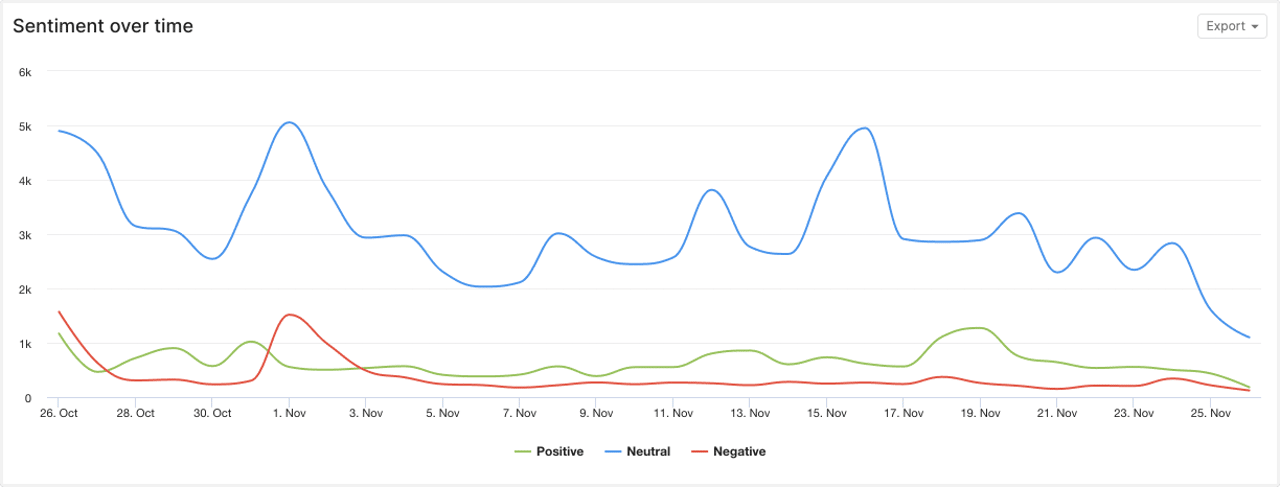

While sentiment cannot be considered a metric itself, it can be used to calculate the net sentiment rate (or net sentiment score). This metric is basically a ratio of positive to negative mentions. Reflecting the audience's overall perception, the net sentiment rate correlates directly to sales and the company's revenue.
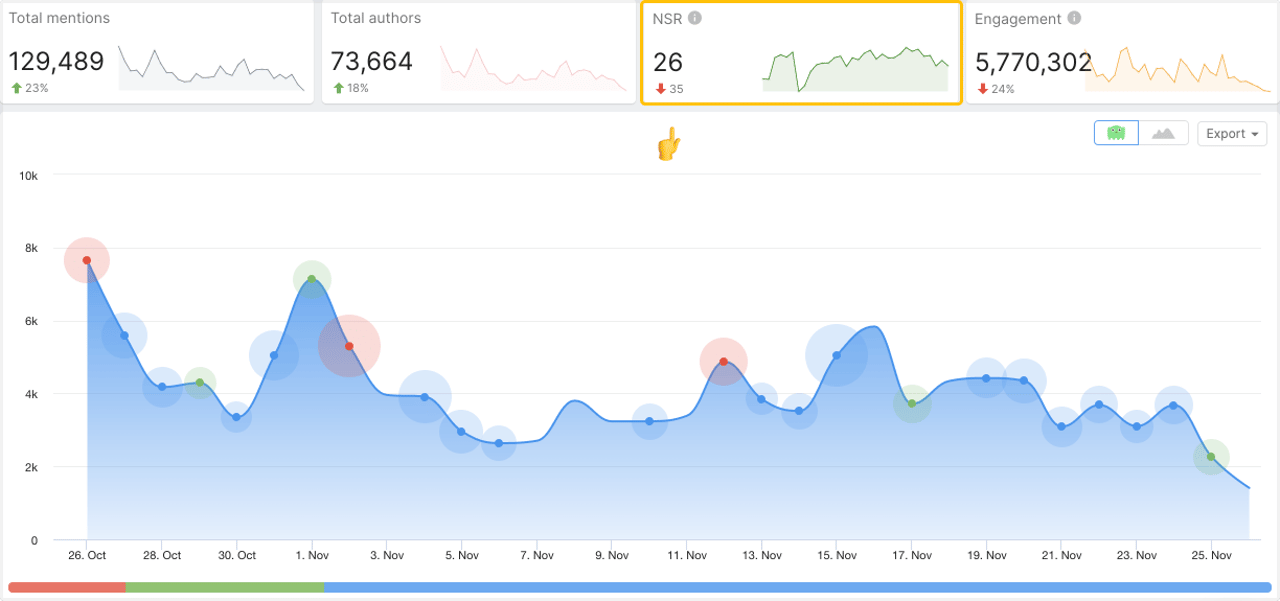

Engagement
While businesses refuse to mindlessly grow the number of followers on their social networks, engagement is considered a more meaningful metric. There are several causes behind this. First, it indicates the genuine audience's interest in the branded material or readiness to join in related discussions. On the other hand, engagement is critical for boosting reach on social networks such as Instagram and Facebook. The stronger the involvement on these platforms, the more impressions a post can receive.
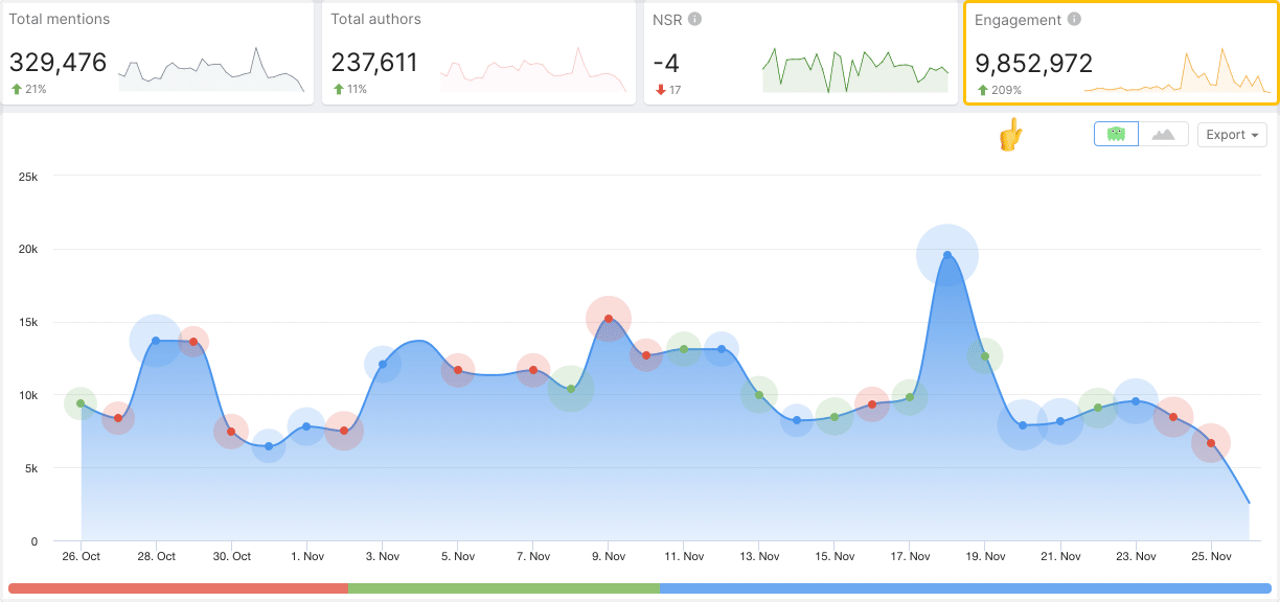

YouScan allows you to track the overall engagement of all mentions over the given timeframe or check particular posts, authors, and even trends.


It's been a while since marketers began to favor engagement above follower count when selecting influencers for collaborations. More and more brands now prefer to collaborate with micro-influencers, since they have a more engaged and loyal audience.
Share of Voice
Having a complete data set on your brand is excellent, but knowing your market position is also critical. When comparing themselves to competitors, marketers should look at the share of social media conversations involving their brands to determine the level of brand awareness and the approximate number of relevant discussions.
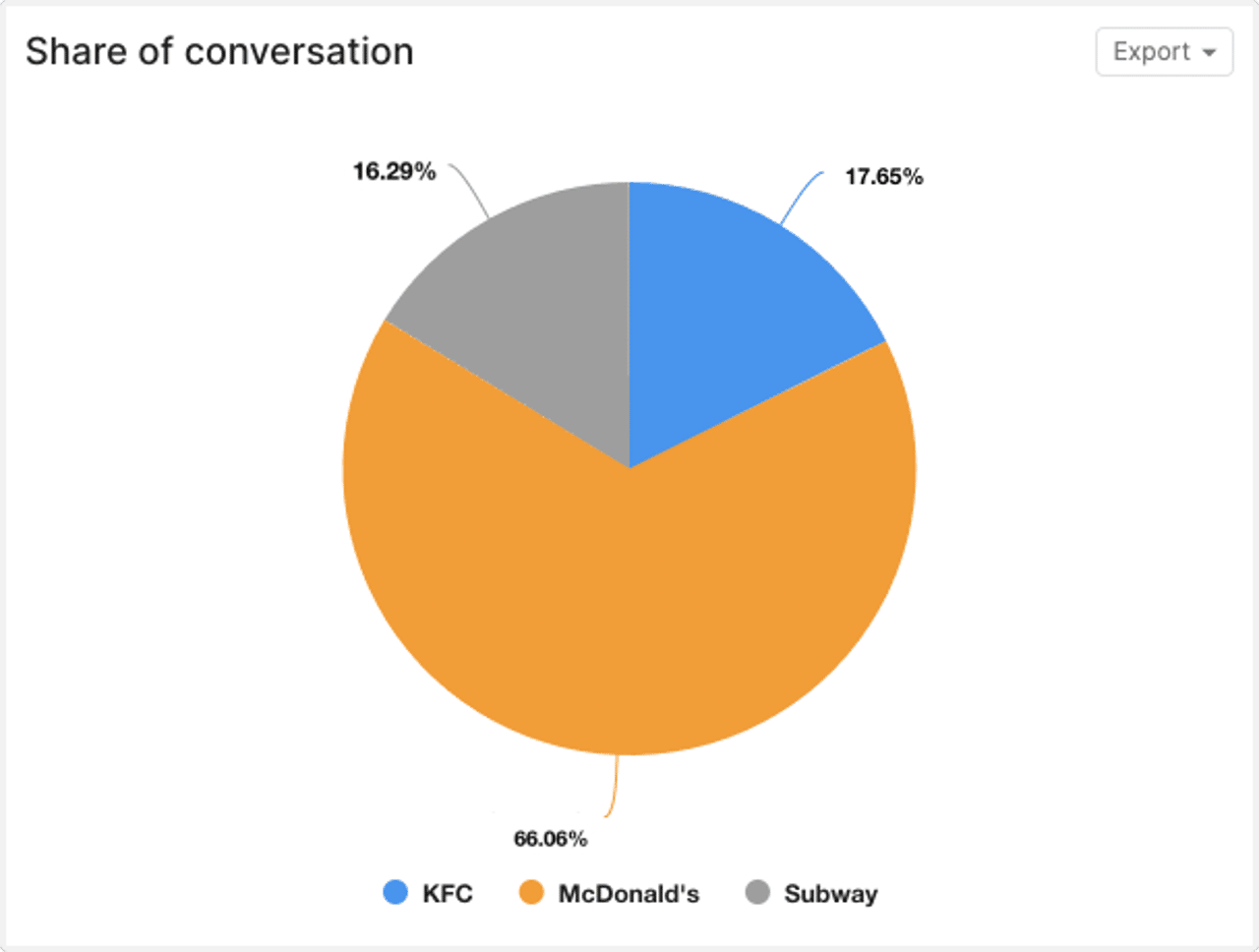

This metric is one of the most useful since it allows you to see the current state of affairs and develop your strategy around it.
Social media channels volume
With the growing trend of omnichannel marketing, it is becoming challenging to keep all social media channels on the same high level in terms of content and overall team involvement. At this point, the CMO should prioritize each platform and decide where to invest additional resources.
For instance, knowing that most mentions originate from Twitter, a brand might recruit additional team members to communicate with customers on this platform to solve their issues as soon as possible and deliver high-class service.
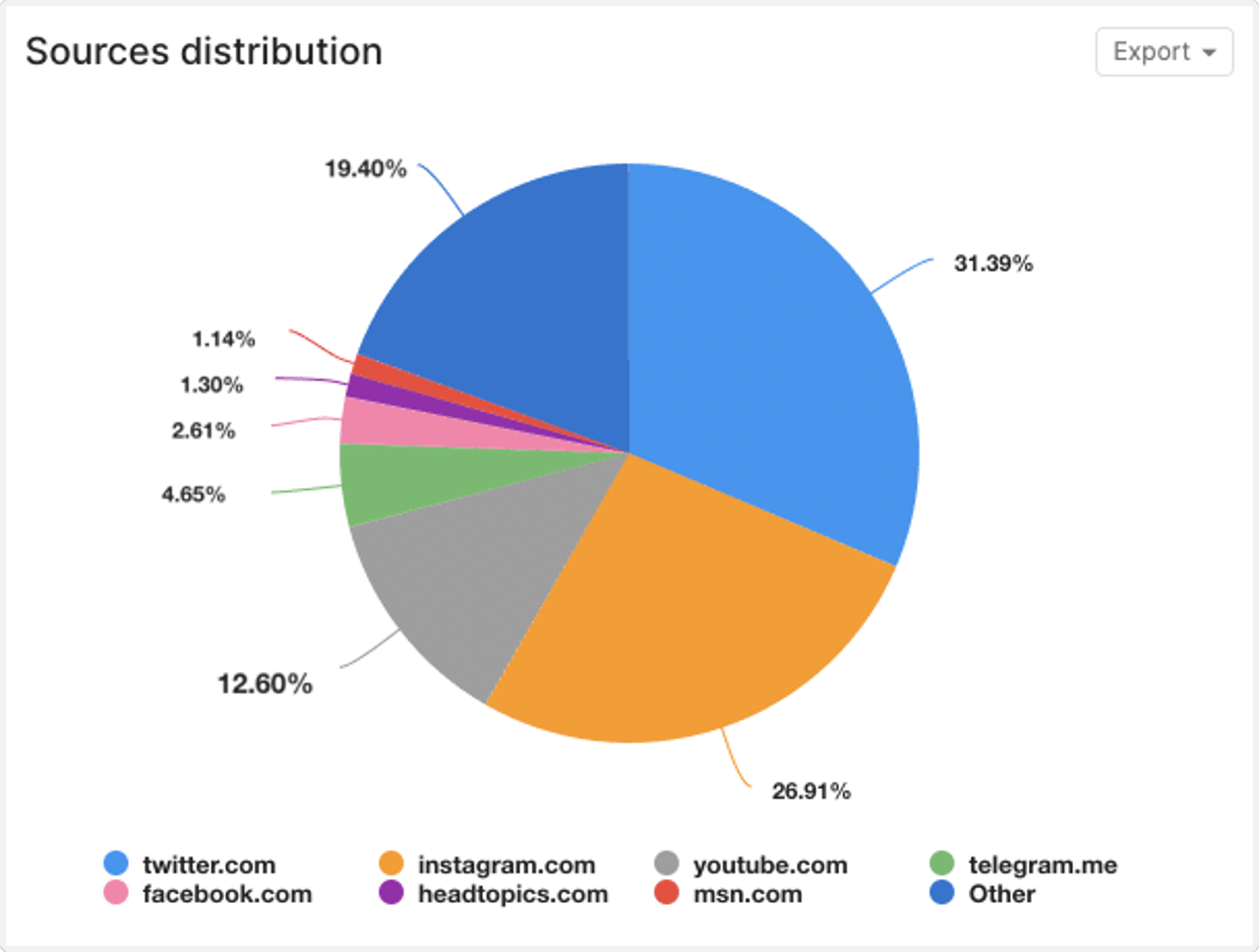

Another use-case is adapting the content to those platforms that are popular among the target audience. Glossier, for example, relies very heavily on visual communication; therefore, Instagram and YouTube have a significant impact on their business. Being an online-first brand, Glossier designs gorgeous Instagrammable packaging to boost their market position and attract "their" audience.
Number of WOM mentions
What is the correlation between WOM (word of mouth) and social media listening? Let us explain. Because our platform can collect a large number of brand mentions from various sources, such as social networks, online outlets, Q&A websites, and so on, these posts may be spread by communities rather than individuals. Aside from that, these mentions may include personal opinions or commercial information such as sales, promotions, or advertising. Despite being included in the overall number of mentions, they do not provide valuable consumer insights.
As a result, we decided to separate such posts from those that originated on personal user pages, allowing marketers to better analyze their audience and rely on the quality of the data rather than its quantity. As for now, YouScan can categorize mentions into two broad categories: WOM and Promo, each of which has more specific subcategories.


WOM category mostly includes posts by individuals, so counting the percent of such mentions is vital to understand whether your brand is actively discussed online or not.
Bottom line
Marketers now have a variety of tools at their disposal to measure hundreds of metrics, but not all of them bring real value to the business. Choosing relevant metrics is thus another task for the CMO. Working with social media intelligence tools, on the other hand, may simplify many processes, including data collection and turning it into actionable insights.
Request YouScan's free demo to get the most out of social media data.



.png)